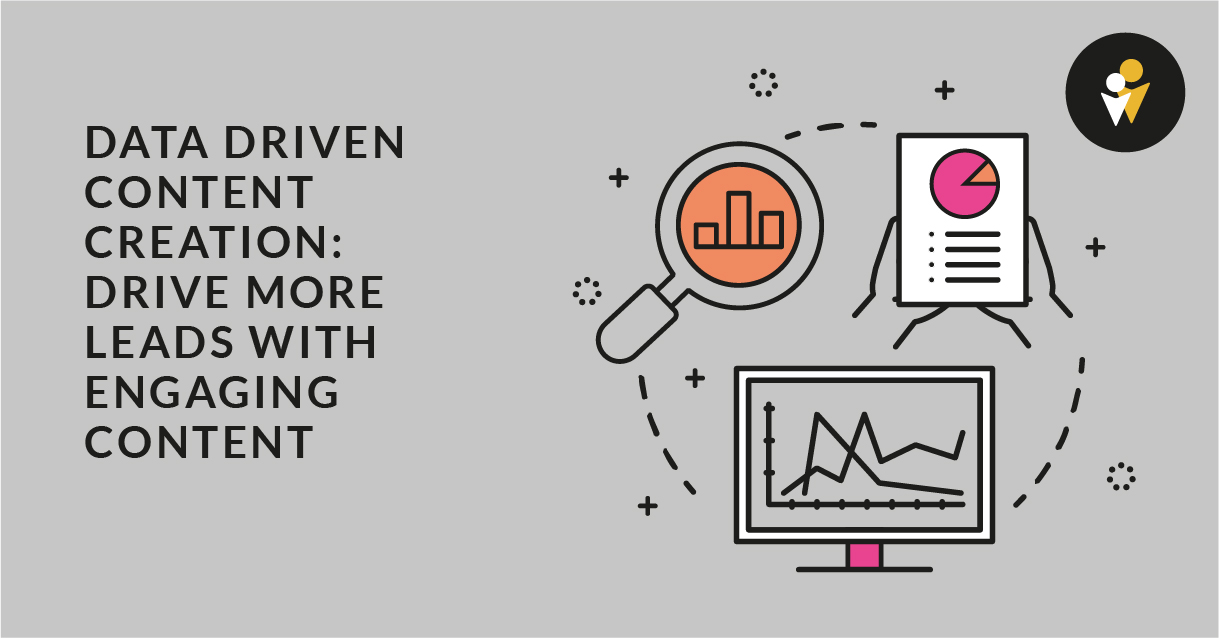Content without data is guesswork. A data driven approach turns your content strategy into a measurable, repeatable growth engine.
If you are looking to grow, and keep, an audience, you need to know who they are. By building content around behavioral patterns, audience preferences, and performance trends, you create assets that resonate, convert, and last.
Understanding the Types of Data that Drive Stronger Content
Behavioral Data
Time on page, bounce rate, and click-through rate show how your audience interacts with your content. Are they clicking on your CTAs or skipping straight to the downloadable worksheet? These metrics offer a window into how your audience moves, decides, and engages.
Demographic Data
Understanding your audience demographic helps you tailor your messaging for the right people. Walk into a church with an older congregation and you’ll see stained glass, hymn books, and suits. A younger crowd? Expect laser lights, electric guitars, and jeans. Same message, different delivery. Knowing your audience helps you tailor your content accordingly.
Engagement Metrics
Want to know what’s working? Engagement tells the truth. Comments, shares, time on page; these signals show what’s connecting and what’s falling flat. Comparing engagement across your content helps you identify patterns and double down on what resonates.
Search Intent
When you align content with what your audience is actually searching for, you stop guessing and start ranking. Search engines reward content that satisfies queries. Write with the intent behind the query in mind, and visibility follows.
Sources of Data for Content Creation
Analytics Tools
Tools like Google Analytics, Search Console, and SEMrush help you track performance, uncover user behaviors, and spot patterns that drive traffic. The more tools you combine, the more complete your picture becomes.
Social Listening Tools
What is your audience talking about? What’s rising in relevance? Platforms like Brandwatch, Sprout Social, and Hootsuite give you a pulse on trending topics, audience sentiment, and conversation volume; insights that can directly inform your next post or campaign.
Customer Feedback
Some of the most valuable data doesn’t come from tools, it comes straight from your customers. What are they asking during sales calls? What gets mentioned in reviews or support tickets? Feedback loops through surveys, comment sections, and real conversations offer ready-made inspiration for relevant, high-impact content.
SEO Platforms
SEO data helps you understand not just what people are searching for, but how you can outrank your competitors. Platforms like Ahrefs, SEMrush, and Clearscope identify keyword gaps, content opportunities, and optimization tactics so your content works harder for visibility.

Analyzing Data for Content Insights
Identifying Trends and Patterns
You’ve seen the brand that tries to jump on a trend three weeks too late. Avoid that. With consistent monitoring of data, you’ll catch what’s emerging early. Pay attention to audience behavior and search trends. What’s gaining traction, what’s slipping? That insight helps you stay relevant, not reactive.
Content Gap Analysis
What do you already cover and where are you missing the mark? A good content gap analysis shows you what your audience wants that you haven’t delivered yet. Maybe your competitors are ranking for long-tail keywords you’ve ignored, or you haven’t addressed questions your audience keeps asking. That’s your opportunity zone.
A/B Testing
Small changes can lead to big improvements. Test headlines, intros, calls to action, even full layouts. Then let the data speak. A/B testing reveals what grabs attention, holds it, and compels action. By having this direct comparison between your own content, you can see how to tailor your content best for success.
Competitor Analysis
Your competitors can actually be an incredible tool. By watching where they succeed and fail, you can avoid their pitfalls and surpass their successes. If they are ranking, ask why. If they’re not, figure out what they missed. Ever wonder why one intersection will have two nearly identical drug stores? Frequently the answer is that one of them invested time and money to research where to build a profitable location and the other skipped the work and bought the plot down the road. Use your competitors research and investments for your own betterment.
Applying Data to Content Creation
Data Informed Content Ideation
Where do you get your ideas for your content? One of the best places is from your day to day interactions. When a topic comes up with a customer, that can be an opportunity for creation. Let your content be informed by real questions, pain points, and trends that you are seeing. When your content is born out of real world signals it often resonates more and preforms better.
Optimizing Content for Performance
If you are not optimizing for SEO you aren’t being seen. SEO is important for every aspect of content: titles, headers, meta descriptions, media, and even the formatting. If you want your content to be viewed, you need to have it be clear and searchable.
Personalization and Targeting
Data helps you stop shouting into the void. Instead, speak directly to the people who need your message most. Behavioral and demographic insights let you create different content for different segments. Young professionals vs. seasoned execs. First-time buyers vs. long-term clients. Sales vs. marketing. When you know who you're talking to, your content becomes more relevant and more effective.
Content Format Selection
Sometimes your data is all correct, but the delivery method is wrong. How does your audience engage with content? Is your audience more likely to watch a video over reading a blog post. Will they listen to a podcast on their daily commute or check out an infographic while they drink their morning coffee. Different audiences will have different preferences, and the data can tell you what they are. This can also incorporate personalization. If the data tell you that young professionals engage with podcasts while more established audiences read articles, that should influence how you create that content.

Demonstrating Transparency and Credibility
Citing Data Sources
Which of these builds more trust and authority? ‘I helped my client achieve their goals and thrive financially’ or ‘I helped my client increase qualified leads by 73% and double their marketing ROI within the first 90 days’? That is the power of data. Specificity builds authority. When you cite credible sources and share your own data, you don’t just sound confident, you become trustworthy.
Using Data Visuals
Charts, graphs, and infographics don’t just make your content more engaging—they make it easier to understand and remember. Visuals also boost shareability. So if you’re working with compelling data, don’t hide it in a paragraph. Highlight it with a graphic and let the numbers speak for themselves.
Measuring The Impact of Data-Driven Content
Metrics for Success
Before you hit publish, ask: how will we know this worked? Define KPIs that align with your goals. That could be organic traffic, conversion rates, time on page, or keyword rankings. Clear metrics keep your team focused and make it easier to replicate success—or course-correct quickly.
Continuous Improvement
Good content isn’t static. Algorithms change. Audiences evolve. What worked last quarter might underperform next month. Build in time to analyze and refresh your content or you will fall behind others who are.
Content Lifecycle Management
Most content won’t last forever. An article on Skype for business isn’t relevant anymore so it shouldn’t be clogging up your valuable content from being seen. Use the data to know when to promote, repurpose, refresh, or retire content. Maybe that one article is no longer as useful as it once was but with slight tweaks it makes a great script for a video. Or maybe you have a high preforming blogpost that has fallen in the rankings and could be updated with better keywords.
How to Succeed with Data Driven Content Creation in 2025
Content without data is noise. But when your content is fueled by real audience behavior, refined by analytics, and optimized for discoverability, it becomes a strategic asset.
Start small if you need to. Track performance, ask better questions, test different formats. Then build from there. The more data you use, the more your content works for you. Not just today, but every time someone clicks, reads, or shares.
Ready to create content that drives real results?
Let’s talk about how PIC can help you turn audience data into your most valuable marketing asset.
















